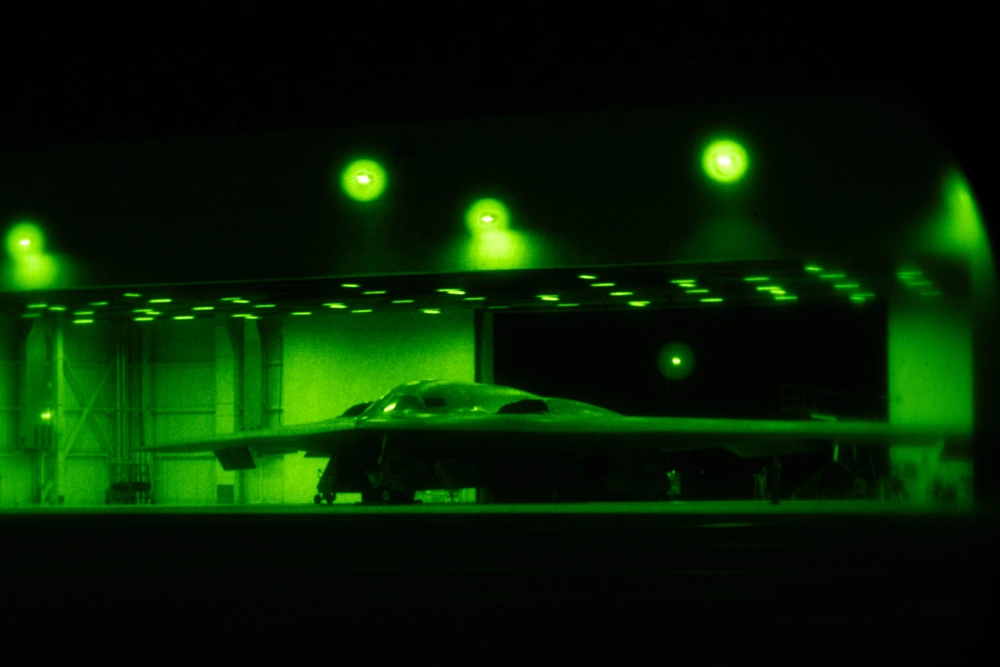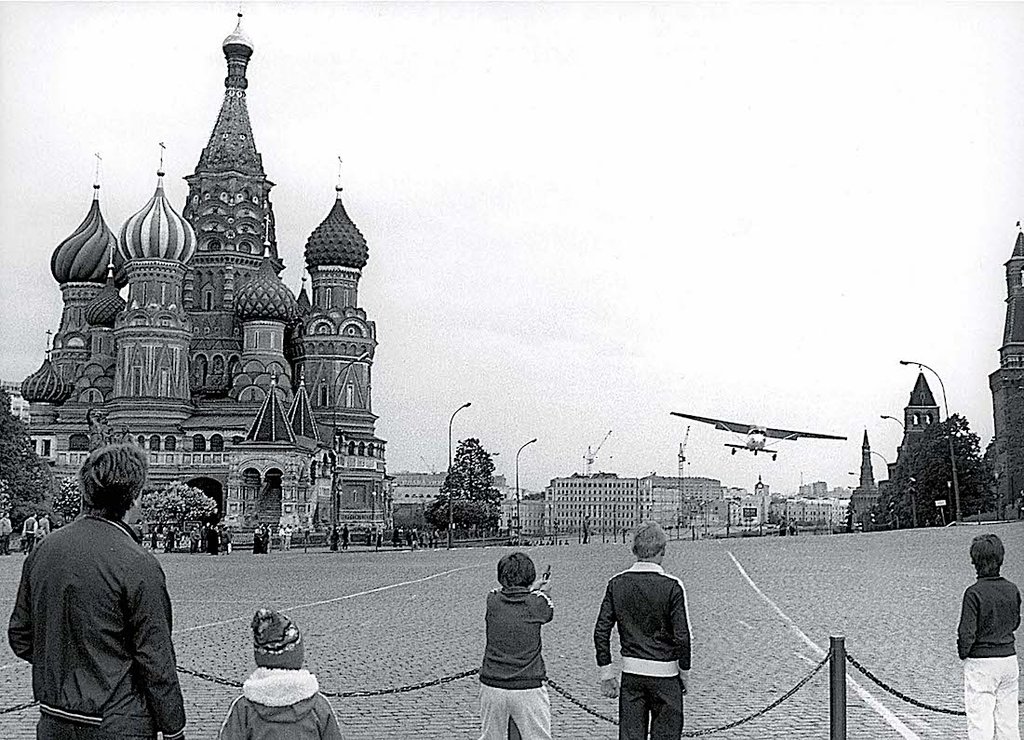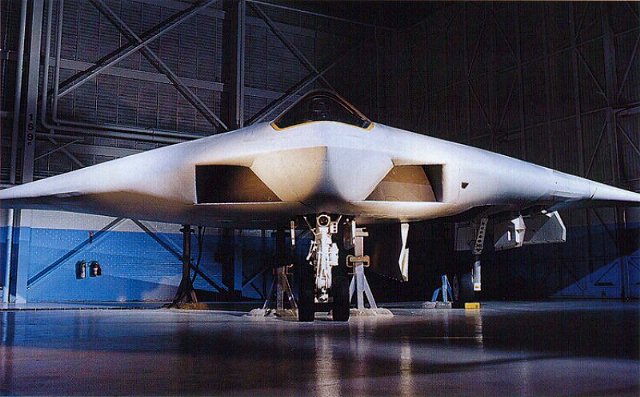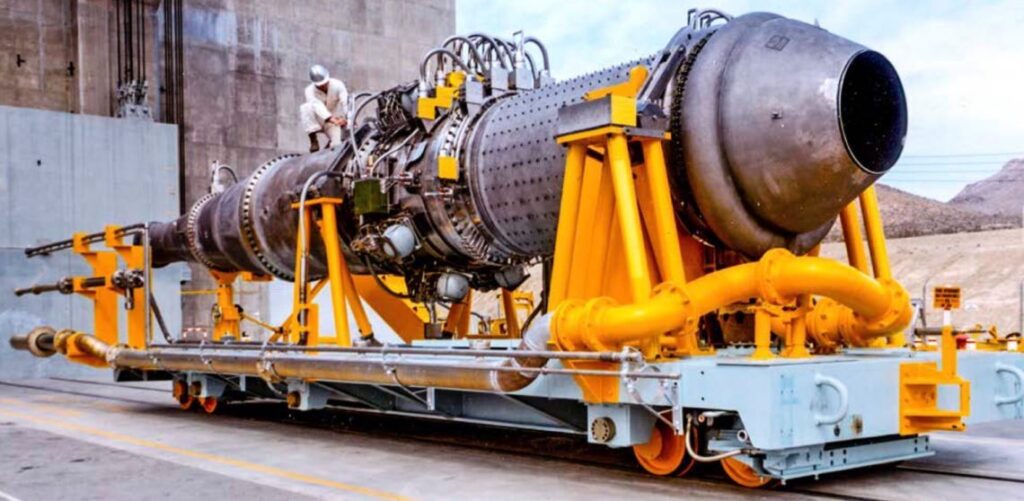Three days ago, the United States Air Force carried out the largest stealth bomber air strike in history, with seven B-2 Spirits dropping 14 of the largest bunker-busting munitions ever built on two of Iran’s most heavily protected nuclear facilities, Fordow and Natanz.
Despite contradicting claims made across social media, it is still too early to know for sure how effective these strikes really were in crippling Iran’s long-term plans to develop and field nuclear weapons. But even with some uncertainty looming, there’s no denying that this mission was an immense operational success and a scary reminder of just how capable American airpower really is when left off its leash.
While the decision to conduct this strike was a politically controversial one, this mission, dubbed “Operation Midnight Hammer,” will be studied by military scholars and pilots for years to come.
Operation Midnight Strike involved the coordination of more than 125 individual aircraft, ranging from decoy bombers sent out over the Pacific, tankers refilling aircraft in near radio silence, spy planes, electronic warfare assets, two generations of fighter aircraft. It also involved a precisely coordinated Tomahawk missile strike against Iran’s largest atomic science and uranium conversion facility in Isfahan; this strike was launched from Ohio-class guided missile submarines hundreds of miles away.
At one minute after midnight on Saturday morning, the first in a large formation of B-2 Spirit stealth bombers took off from Whiteman Air Force Base, MO. With seemingly as many as nine bombers involved, this single formation represented nearly $20 billion dollars worth of aircraft. The formation split immediately after takeoff, with two B-2s reported heading west with their transponders active, making it possible for the world to track what appeared to be the repositioning of bombers to the Pacific in advance of future strikes or as a bit of geopolitical theater to apply pressure to the Iranian regime.
However, the other seven bombers, flying with their transponders off and with minimal communications between them, headed east.
The B-2 Spirit is widely recognized for its extreme low observability, which would certainly be an important factor in the mission ahead, but there was another reason why these exotic flying wings were chosen for this job. It is the only aircraft on the planet capable of deploying the world’s largest bunker buster – the GBU-57 MOP, short for Massive Ordnance Penetrator.

The GBU-57 MOP is a massive 30,000-pound weapon encased in a solid ferro-cobalt alloy more than three inches thick in places with a solid tungsten nose designed to rip through hundreds of feet of steel-reinforced concrete before detonating more than 5,300 pounds of explosives housed inside. This explosive payload was designed specifically for bunker-busting applications. Upon detonation, each bomb releases roughly the same explosive power as 265 Hellfire missiles combined. And until this week, it had never been used in combat.
The U.S. Air Force, notorious for under-reporting the maximum capabilities of its aircraft and weapons, says the B-2 Spirit is capable of carrying 40,000 pounds of ordnance.Yet, as these seven bombers crept across the Atlantic sky, they each carried two of the world’s biggest bunker busters, or just shy of 60,000 pounds of steel-reinforced explosive power.
Technically speaking, the B-2 has enough range to fly all the way to Iran from Missouri without needing to refuel, but with such massive payloads onboard, the aircraft needed to refuel multiple times, which meant all seven bombers linking up with KC-135 or KC-46 tanker aircraft along pre-planned points throughout their route. With secrecy at a premium, communications between the bombers and the tankers were kept at a minimum. After 17 hours in the air, this covert bomber formation crossed into the domain of USCENTCOM, or the United States Central Command.
Shortly after crossing the threshold into CENTCOM’s areas of responsibility, the seven B-2 bombers were joined by 4th and 5th-generation fighter escorts, flying out farther ahead. Exactly what fighters were involved in these operations has yet to be disclosed, but it stands to reason that air-superiority focused F-22 Raptors and electronic-warfare aircraft like the Navy’s EA-18G Growlers were certainly among them.
To this very point, a contingent of 12 U.S. Air Force F-22 Raptors relocated to Jordan from RAF Lakenheath just days before the offensive, along with several more F-35As and both KC-135 and KC-46 tankers. Likewise, the USS Carl Vinson Carrier Strike Group positioned itself off the Iranian Coast in the Arabian Sea, placing both longer-ranged F-35Cs and electronic-warfare focused EA-18G Growlers within striking distance of the bomber’s target areas.
As Chairman of the Joint Chiefs of Staff U.S. Air Force Gen. Dan Caine put it, the bombers “linked up with escort and support aircraft in a complex, tightly-timed maneuver requiring exact synchronization across multiple platforms in a narrow piece of airspace, all done with minimal communications. This type of integration is exactly what our Joint Force does better than anyone else in the world.”
Related: B-2 strikes in Yemen were a 30,000-pound warning to Iran

Deep beneath the waves of that same waterway, one of America’s unique Ohio-class guided missile submarines was also sailing into position. These subs began their service lives as ballistic missile submarines tasked with carrying America’s last resort arsenal of nuclear weapons. But between 2002 and 2008, four of these “Boomers” (as they’re often called) were converted for non-nuclear duties and had vertical launch systems installed to instead employ a massive complement of 154 conventionally armed Tomahawk land-attack cruise missiles.
As the bombers and fighters approached Iran’s western border, the submarine launched at least 30 of its Tomahawks. These weapons are powered by air-breathing turbofan engines, just like a tactical aircraft, allowing them to cover distances of more than 1,000 miles while flying at relatively low altitudes to mask their approach behind the curvature of the Earth and even local terrain. With a cruising speed of around 570 miles per hour and hundreds of miles to cover to reach their targets in Isfahan, the timing of these launches had to be precise to prevent the bombers or the missiles from reaching their targets too soon and tipping Iranian defenses off about the operation.
The Tomahawks were headed for key surface infrastructure targets at the Isfahan facility, while the bombers closed with the hardened subterranean bunkers of Iran’s uranium enrichment facilities at Natanz and Fordo farther north.
Both of these facilities were built deep underground to prevent bunker-busting munitions from being able to reach them. They were also blanketed in the most robust air defenses Iran could manage, but after Israel’s offensive into Iran last week decimated the nation’s air defense apparatus, it seemed the American aircraft faced little in the way of interference.
Nonetheless, heavy jamming was reported throughout Iran as the strike package traversed the country’s airspace, and just before arriving over the target location, American fighters launched what General Caine described as “high-speed suppression weapons” to mitigate any air defense systems that might come online during the approach.

These weapons were likely radar-hunting AGM-88E Advanced Antiradiation Guided Missiles, or AARGMs. These weapons have 60-miles range and carry an anti-radiation seeker capable of picking up and closing with the broadcasting radar waves used by air defense systems for targeting. But unlike older radar-hunters, these missiles also carry GPS-assisted inertial navigation and a millimeter-wave radar seeker. So, if the enemy powers down their radar array, the weapon can still close with its last known position, and if the enemy tries to pack up and relocate, the radar-seeker makes it possible to close with even moving targets. Just before impact, these weapons then transmit an image of their target to the launching aircraft, making it possible to assess whether or not you’ve mitigated the anti-air risk or not in real time.
The AARGMs were all but certainly launched without specific targets in mind. Instead, they scanned the area out ahead of the strike package for enemy radar arrays that might be waiting to power up until the American aircraft were in range. It’s unclear whether these weapons did find targets to destroy or not, but American officials have stated that Iran didn’t manage to launch a single missile at these bombers or their fighter escorts throughout the approach.
Then, at roughly 2:10 AM local time and after more than 18 hours in the air, the lead B-2 Spirit in the formation opened its massive payload bay doors and dropped both of its massive GBU-57s at specific points on the ground over Iran’s subterranean Fordow facility. Dropped from high altitude, these 30,000-pound weapons ripped into the earth, penetrating what was likely to be more than one hundred feet of rock and soil before detonating.
Fordow’s massive 54,000 square foot subterranean bunker is believed to house some 3,000 centrifuges used in the nuclear enrichment process. But at an estimated depth of between 260 and 300 feet, it’s unlikely that even the massive GBU-57 could reach it – at least, on the first try. Immediately after the first bomber dropped its payload, a second followed suit, dropping another two 30,000-pound bunker busters, and then another, striking six specifically chosen locations on the ground above Fordow with pinpoint accuracy.
Post-strike images of the Fordow fuel enrichment facility in Iran from @Maxar dated 22 June.
— John Pollock (@John_Pollock22) June 22, 2025
Large craters caused by the US strikes can be seen on the ridge above the underground complex. A layer of grey-blue ash covers the area around the site. pic.twitter.com/wzFNnUil7a
And that was just the beginning. Then three more B-2s dropped another six weapons directly into the holes produced by the first wave, penetrating all the way into the hardened facility before detonating a combined 27,540 pounds of a propellant-like plastic explosive compound developed specifically to maximize its blast energy output for bunker-busting applications.
As these bombs tore through Iran’s most protected nuclear site, the strike force headed south for Natanz as the Navy’s Tomahawks closed in on Isfahan’s nuclear research facility. The last two GBU-57s carried by the bombers were dropped on Natanz just minutes after the strikes on Fordow. With a single large crater now visible in satellite imagery, it seems likely that these two bunker busters also penetrated through the same hole for maximum depth. Finally, with Natanz struck, the Tomahawks made landfall in Isfahan, ending the strikes and leaving America’s seven stealth bombers, and their 14 crewmembers, with nothing but a 17+ hour flight home left to overcome.
All of the strikes were carried out in less than 25 minutes.
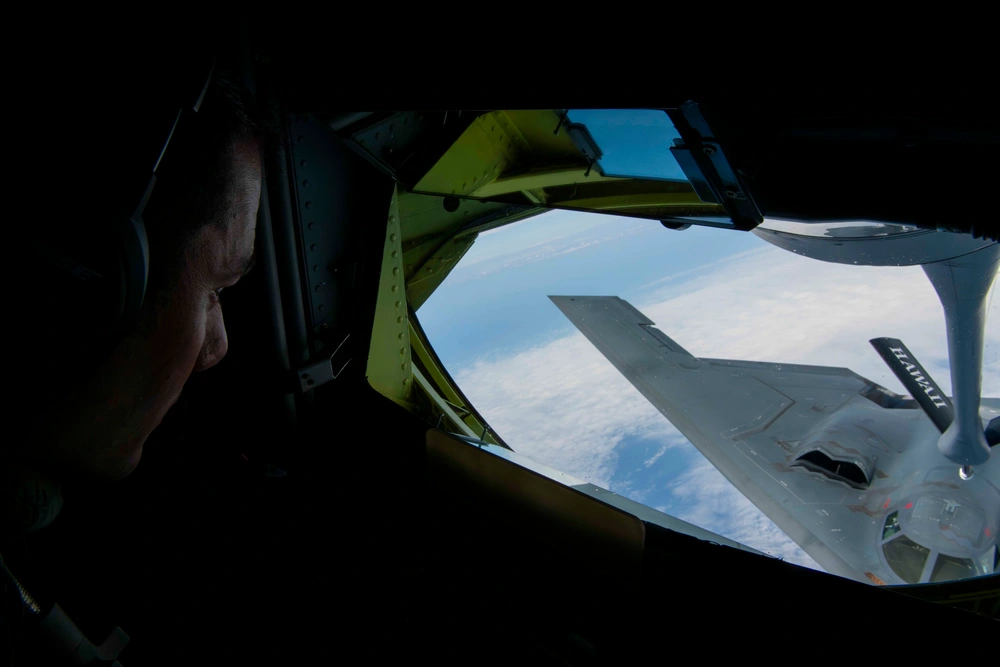
In a subsequent press conference, Defense Secretary Pete Hegseth stressed that these strikes were not “open ended,” as he put it, meaning the United States accomplished its goals of sufficiently degrading Iran’s nuclear facilities and does not intend to continue combat operations against the embattled country unless Iran retaliates against American troops or interests in the coming days.
Nevertheless, it still might be too early to say the job’s done. Since the strikes, Israeli officials have stated that Fordow was indeed extensively damaged, but likely wasn’t entirely destroyed. Likewise, there remain concerns that Iran may have relocated its stockpile of enriched uranium or even some of its centrifuges prior to the strikes, which could allow it to continue toward fielding nuclear weapons in hiding elsewhere.
But claims you may have seen flooding onto social media about the strikes being a failure are equally premature. It’s clear, looking at satellite images of the areas around Fordow, Natanz and Isfahan that these strikes were very effective at creating extensive damage throughout all three facilities: that damage is all but certainly enough to “significantly degrade” Iran’s ability to continue pursuing nuclear weapons. The question is ultimately, how long will these strikes set the Iranian regime back. And that’s the part we’ll need much more robust battle damage assessments to work out.
What comes next in this conflict is now in Iran’s hands. Israel has stated that its goal is to end the threats posed to it by Iranian nuclear weapons and ballistic missiles, and the United States has described its aims as degrading Iran’s nuclear program. There’s a reasonable argument to be made that all of these objectives have already been met to one extent or another.
But whether or not these strikes mark the end of America’s involvement in this war or just the beginning is, at this point, still up in the air.
Feature Image: A U.S. Air Force B-2 Spirit is prepared for operations ahead of Operation MIDNIGHT HAMMER at Whiteman Air Force Base, Missouri, June 2025. (Courtesy photo)
Read more from Sandboxx News
- ‘USS Dorado Project’ aims to solve WWII’s biggest submarine mystery
- Explosive confidence drills against a moving car
- The F-15I Ra’am fighter jet is an Israeli thunder enabling the country’s success against Iran
- The military roots of Juneteenth and why we celebrate it
- Boeing makes a significant step toward fielding truly combat-capable drone wingmen

